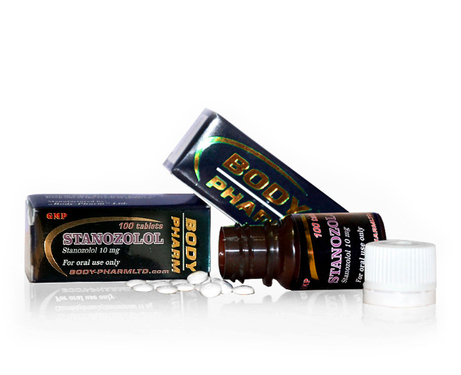products / Stanozolol 10mg
Composition:
Each tablet of the drug contains 10 mg of Stanozolol.
Indications:
Stanozolol is used for statements of general deterioration, aplastic anemia, anorexia rebel, convalescent, chronic and debilitating diseases, postmenopausal osteoporosis, or elderly, and is sold under the name of Winstrol alterations of protein metabolism with muscle wasting and negative balance nitrogen. It is also used for nephrotic syndromes, asthma, rhinitis, rheumatoid arthritis, etc. to counteract the catabolic effect of steroids, as well as an adjunct in the treatment of bedsores, fractures of slow consolidation, osteoporosis, extensive burns, pre and post-operative periods, as prophylactic treatment of hereditary angioedema by increasing protein synthesis.
Contra-indications:
It is contraindicated in cases of hypersensitivity to Stanozolol, pregnancy and lactation, carcinoma of prostate tumors in male hormone-dependent, active hypercalcemia, and liver failure.
Administration:
Adults - initial dose 10-20 mg/day. The maintenance dose is 5-10 mg/day.
To decrease the frequency and severity of attacks of hereditary angioedema dose is individually adjusted depending on clinical response. The initial dose is 2 mg 3 times per day. On receipt of a positive reply, the dose is gradually reduced in a range from one to 3 months to 2 mg per day.
Medical action:
Stanozolol is a structural analog of testosterone which increases collagen production and decreases the anti-anabolic action of cortisone. It is also reported to reduce fibrin deposition. It corrects the formation of kinin or kinin-like factors which may be associated with edema and swelling seen in hereditary angioedema.
Precautions:
In the case of patients with liver disease, it is advisable to monitor the rates of cholestasis. Patients who are sensitive to collateral phenomena endocrine or electrolytes should be monitored periodically during prolonged therapy. Patients with lactose intolerance may experience diarrhea, although the amount present as an excipient in tablets is probably not enough to trigger symptoms. Furthermore, Stanozolol should be used with caution and under strict medical control for patients with heart failure, hypertension, epilepsy, migraine, diabetes, metastatic bone, dysmenorrhea, dyslipidemia, coagulation disorders, and porphyria.
Side effects:
Stanozolol adverse effects are generally rare, moderately large, and irreversible in some cases. The therapeutic use of Stanozolol described adverse effects on the liver (peliosis hepatic and liver tumors) and cholestatic jaundice. In most cases, these effects disappear when the treatment is discontinued.
Have also been reported diarrhea, nausea/vomiting, excitement, insomnia, virilization, hirsutism, hypertrophy of the clitoris, acne, inhibition of testicular function with oligospermia and sodium retention, potassium, chloride, and water.
Overdosage:
An overdose of this medication is unlikely to threaten life. Contact an emergency room or poison control center for advice if an overdose is suspected. Symptoms of Stanozolol overdose are not known.


